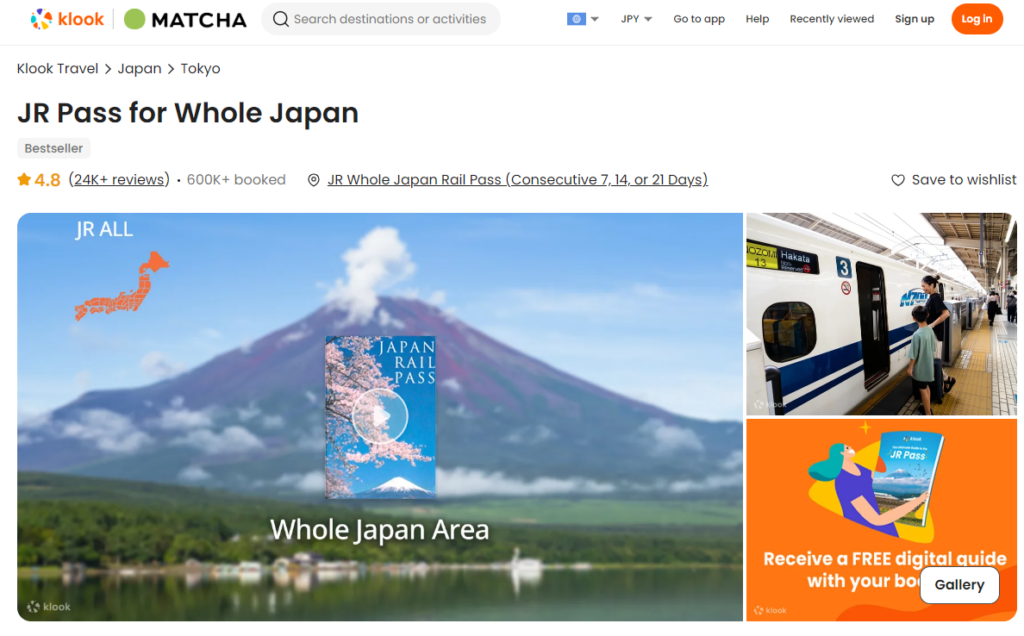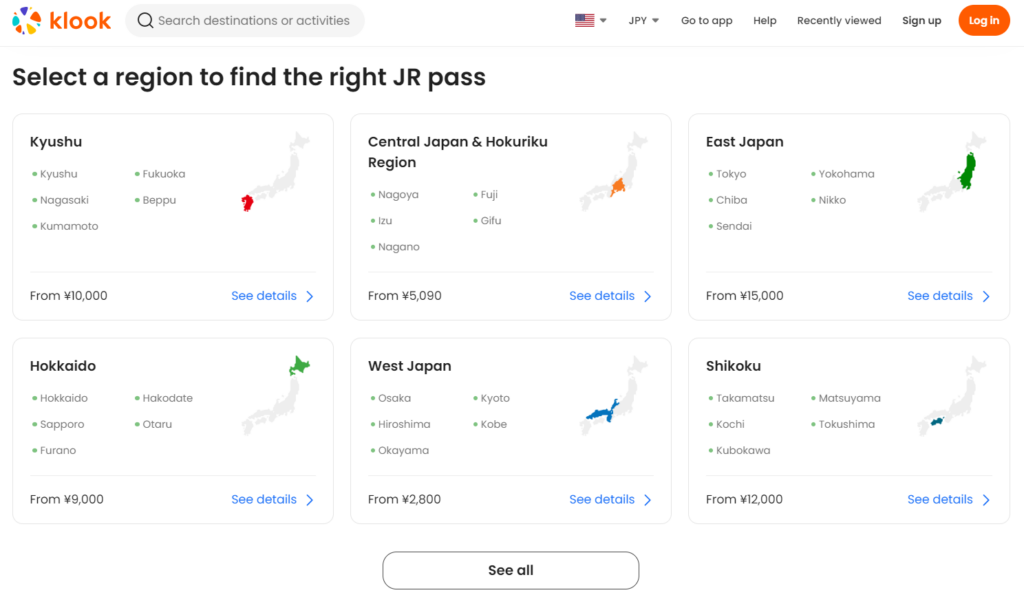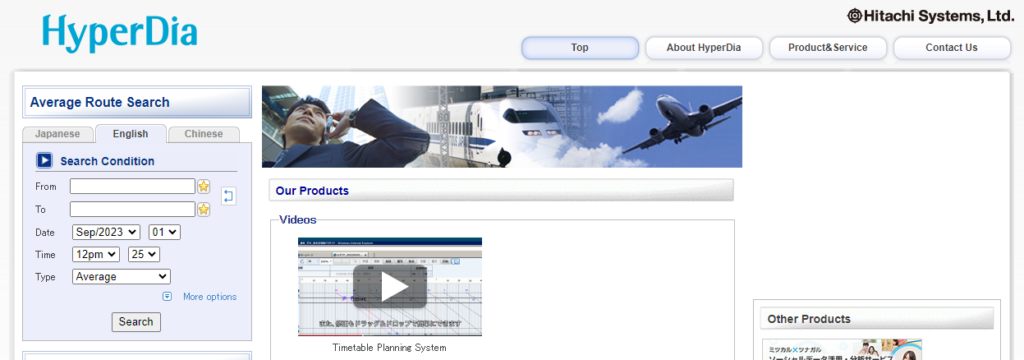Exploring Japan Made Easy: Your Ultimate Guide to the Japan Rail Pass
2024-02-19
Embark on an unforgettable journey across Japan with the Japan Rail Pass. This guide reveals how to make the most of this essential travel tool, covering everything from purchase options to navigating Japan’s extensive rail network. Ideal for planning comprehensive trips or seeking practical tips, it promises efficient and enriching travel experiences.
Summary
- The Japan Rail Pass is an efficient way for tourists to travel across Japan, offering two types: Ordinary and Green Car.
- There are three ways to purchase the JR Pass: online, through travel agents, or at major stations in Japan.
- Navigating Japan’s rail network is easier with planning tools like Hyperdia, which helps in understanding train routes and schedules.
- To maximize the JR Pass, plan extensive itineraries covering multiple regions and use the Shinkansen for quick travel.
- Practical tips for train travel include managing luggage, eating on board, understanding Wi-Fi availability, reserving seats, and navigating stations.
Understanding the Japan Rail Pass
The Japan Rail Pass, commonly known as the JR Pass, is a highly efficient and cost-effective solution for foreign tourists traveling across Japan. It offers unlimited travel on almost all trains operated by the Japan Railways Group, including shinkansen (bullet trains), limited express, rapid, and local trains. The JR Pass comes in two types: Ordinary and Green Car (First Class). The Green Car, marked by a green four-leaf clover, provides additional comforts like larger seats and more foot space, enhancing the travel experience significantly.
Introduced as a boon for tourists, the JR Pass simplifies travel in Japan, removing the hassle of purchasing individual tickets for each journey. However, the pass witnessed a substantial price increase in autumn 2023, though it continues to be a valuable asset for travelers who prioritize convenience and extensive travel.
Validity of the JR Pass extends beyond just train travel. It includes the Tokyo Monorail to and from Haneda Airport, the JR Ferry to Miyajima (excluding the visitor tax), and specific non-JR trains that provide access to isolated JR lines. Furthermore, the pass is accepted on a select number of local JR buses, offering a comprehensive travel solution across various regions of Japan.
Despite its broad applicability, the JR Pass does not cover all train lines in Japan. Non-JR trains, including many subway lines in major cities, do not accept the JR Pass. Additionally, the Nozomi and Mizuho trains along the Tokaido/Sanyo Shinkansen lines require a supplemental fee when using the JR Pass.
In conclusion, the Japan Rail Pass remains an indispensable tool for foreign tourists, offering an unparalleled opportunity to explore Japan’s diverse landscapes and cultural offerings with ease and efficiency.
Purchasing and Exchanging the JR Pass
The Japan Rail Pass offers flexibility in purchasing and exchanging, catering to travelers’ varied needs. There are three primary ways to buy a JR Pass:
Online: Klook
This is the most common method. You can buy a JR Pass through authorized websites like klook, and pick it up at designated place of your convenience.

Through Travel Agents Outside Japan
Accredited travel agents sell Exchange Orders for the JR Pass. Once you receive the voucher and are in Japan, you have three months to exchange it for the actual pass. Advance ordering is advisable to avoid potential delays in delivery.
List of Official Agents by Regions
At Major Stations in Japan
The JR Pass can be bought at major train stations and airports like Narita, Haneda, and Kansai. However, buying a pass inside Japan is approximately 13% more expensive than other methods.
Below Table is the List of JR stations where you can purchase JR Pass and its Business Hours / Opening Hours.
| # | Prefecture | Station Name | Pick-up / Exchange / Sales Location | Business Hours | Pick-up for Web Sales | Exchange of Voucher | Purchase for Domestic Sales |
|---|---|---|---|---|---|---|---|
| 1 | Hokkaido | Kushiro Station | Ticket Counter | 10:00-18:00 | ✓ | ✓ | ✓ |
| 2 | Hokkaido | Obihiro Station | Ticket Counter | 9:00-17:00 | ✓ | ✓ | ✓ |
| 3 | Hokkaido | Asahikawa Station | Ticket Counter | 9:30-17:30 | ✓ | ✓ | ✓ |
| 4 | Hokkaido | Sapporo Station | JR Information Desk | 8:30-19:00 | ✓ | ✓ | ✓ |
| 5 | Hokkaido | New Chitose Airport Station | JR Information Desk | 8:30-19:00 | ✓ | ✓ | ✓ |
| 6 | Hokkaido | Hakodate Station | Ticket Counter (Rail Pass Counter only) | 10:00-12:30, 13:30-18:00 | ✓ | ✓ | ✓ |
| 7 | Hokkaido | Shin-Hakodate-Hokuto Station | Ticket Counter | 9:00-19:00 | ✓ | ✓ | ✓ |
| 8 | Aomori | Aomori Station | JR East Station Travel Service Center Aomori | 10:00-17:30 | ✓ | ✓ | ✓ |
| 9 | Iwate | Morioka Station | JR East Station Travel Service Center Morioka | 10:00-17:30 | ✓ | ✓ | ✓ |
| 10 | Akita | Akita Station | JR East Station Travel Service Center Akita | 9:30-17:30 | ✓ | ✓ | ✓ |
| 11 | Miyagi | Sendai Station | JR East Station Travel Service Center Sendai | 8:30-19:00 | ✓ | ✓ | ✓ |
| 12 | Yamagata | Yamagata Station | JR East Station Travel Service Center Yamagata | 10:00-17:30 | ✓ | ✓ | ✓ |
| 13 | Fukushima | Fukushima Station | JR East Station Travel Service Center Fukushima | 10:00-17:30 | ✓ | ✓ | ✓ |
| 14 | Niigata | Niigata Station | JR East Station Travel Service Center Niigata | 9:30-17:00 | ✓ | ✓ | ✓ |
| 15 | Nagano | Nagano Station | JR East Station Travel Service Center Nagano | 9:00-17:00 | ✓ | ✓ | ✓ |
| 16 | Saitama | Omiya Station | JR East Station Travel Service Center Omiya | 10:00-19:00 | ✓ | ✓ | ✓ |
| 17 | Chiba | Narita Airport Station | JR East Station Travel Service Center Narita Airport | 8:30-19:00 | ✓ | ✓ | ✓ |
| 18 | Chiba | Narita Airport Terminal 1 | Ticket Counter | 6:30-8:30, 18:00-21:45 | ✓ | ✓ | ✓ |
| 19 | Chiba | Narita Airport Terminal 1 Travel Center | Ticket Counter | 9:00-18:00 | ✓ | ✓ | ✓ |
| 20 | Chiba | Airport Terminal 2 Station | JR East Station Travel Service Center Airport Terminal 2 | 8:30-19:00 | ✓ | ✓ | ✓ |
| 21 | Chiba | Narita Airport Terminals 2 & 3 | JR East Station Travel Service Center Narita Airport Terminals 2 & 3 | 8:30-19:00 | ✓ | ✓ | ✓ |
| 22 | Chiba | Kashiwa Station | JR East Station Travel Service Center Kashiwa | 10:00-17:00 | ✓ | ✓ | ✓ |
| 23 | Chiba | Funabashi Station | JR East Station Travel Service Center Funabashi | 10:00-17:00 | ✓ | ✓ | ✓ |
| 24 | Tokyo | Tokyo Station | JAPAN RAIL CAFE | 8:00-16:00 | ✓ | ✓ | ✓ |
| 25 | Tokyo | Tokyo Station | JR East Station Travel Service Center Tokyo | 7:30-20:30 | ✓ | ✓ | ✓ |
| 26 | Tokyo | Tokyo Station (Yaesu Central Gate) | JR Tokai Ticket Office (Yaesu Central Gate) | 7:30-20:30 | ✓ | ✓ | ✕ |
| 27 | Tokyo | Tokyo Station (Yaesu North Gate) | JR Tokai Ticket Office (Yaesu North Gate) | 9:00-19:00 | ✓ | ✓ | ✕ |
| 28 | Tokyo | Tokyo Station | JR Tokai Tours Tokyo Branch | 10:00-19:00 | ✓ | ✓ | ✓ |
| 29 | Tokyo | Ueno Station | JR East Station Travel Service Center Ueno | 8:00-18:00 | ✓ | ✓ | ✓ |
| 30 | Tokyo | Shinjuku Station (New South Gate) | JR East Station Travel Service Center Shinjuku (New South Gate) | 8:00-19:00 | ✓ | ✓ | ✓ |
| 31 | Tokyo | Shinjuku Station (East Gate) | JR East Station Travel Service Center Shinjuku (East Gate) | 9:00-18:00 | ✓ | ✓ | ✓ |
| 32 | Tokyo | Shibuya Station | JR East Station Travel Service Center Shibuya | 9:00-18:00 | ✓ | ✓ | ✓ |
| 33 | Tokyo | Ikebukuro Station | JR East Station Travel Service Center Ikebukuro | 9:00-18:00 | ✓ | ✓ | ✓ |
| 34 | Tokyo | Shinagawa Station | JR East Station Travel Service Center Shinagawa | 8:00-18:00 | ✓ | ✓ | ✓ |
| 35 | Tokyo | Shinagawa Station | JR Tokai Ticket Office | 9:00-19:00 | ✓ | ✓ | ✕ |
| 36 | Tokyo | Haneda Airport | JR East Station Travel Service Center Haneda Airport | 6:45-20:00 | ✓ | ✓ | ✓ |
| 37 | Tokyo | Haneda Airport Terminal 3 Station | (Tokyo Monorail 2F Ticket Gate/Arrival Lobby) | 6:45-20:00 | ✓ | ✓ | ✓ |
| 38 | Tokyo | Monorail: Haneda Airport Terminal 2 Station | Tourist Information Center Haneda Airport Terminal 2 (Inside Welcome Center) | 06:00-22:00 | ✓ | ✓ | ✓ |
| 39 | Tokyo | Haneda Airport Terminal 2 Station | Tourist Information Center Haneda Airport Terminal 2 (Inside Welcome Center) | 06:00-22:00 | ✓ | ✓ | ✓ |
| 40 | Tokyo | Tachikawa Station | JR East Station Travel Service Center Tachikawa | 10:00-17:00 | ✓ | ✓ | ✓ |
| 41 | Kanagawa | Kawasaki Station | JR East Station Travel Service Center Kawasaki | 10:00-17:00 | ✓ | ✓ | ✓ |
| 42 | Kanagawa | Yokohama Station | JR East Station Travel Service Center Yokohama | 10:00-18:00 | ✓ | ✓ | ✓ |
| 43 | Kanagawa | Shin-Yokohama Station | JR Tokai Ticket Office | 8:00-20:30 | ✓ | ✓ | ✕ |
| 44 | Kanagawa | Shin-Yokohama Station | JR Tokai Tours | 10:00-18:00 | ✓ | ✓ | ✓ |
| 45 | Kanagawa | Odawara Station | JR Tokai Ticket Office | 8:00-20:00 | ✓ | ✓ | ✓ |
| 46 | Shizuoka | Mishima Station | Ticket Counter (South Entrance) | 8:00-20:30 | ✓ | ✓ | ✓ |
| 47 | Shizuoka | Shizuoka Station | Ticket Counter | 8:00-20:30 | ✓ | ✓ | ✕ |
| 48 | Shizuoka | Hamamatsu Station | Ticket Counter | 8:00-20:30 | ✓ | ✓ | ✕ |
| 49 | Shizuoka | Hamamatsu Station | JR Tokai Tours Hamamatsu Branch | 10:00-17:00 | ✓ | ✓ | ✓ |
| 50 | Aichi | Nagoya Station | Japan Rail Pass Exchange Office | 10:00-19:00 | ✓ | ✓ | ✓ |
| 51 | Aichi | Nagoya Station | Ticket Counter | 6:00-10:00, 19:00-23:00 | ✓ | ✓ | ✓ |
| 52 | Aichi | Nagoya Station | JR Tokai Tours Nagoya Branch | 8:00-20:00 (until 19:00 on weekends and holidays) | ✓ | ✓ | ✓ |
| 53 | Aichi | Nagoya Station (Hirokoji-Side Entrance) | JR Tokai Tours Nagoya Station Hirokoji-Side Branch | 8:00-20:00 (until 19:00 on weekends and holidays) | ✓ | ✓ | ✓ |
| 54 | Aichi | Chubu Centrair International Airport | Central Japan Travel Center | 9:00-19:00 | ✓ | ✓ | ✓ |
| 55 | Toyama | Toyama Station | Ticket Counter (Central Gate) | 7:00-20:00 | ✓ | ✓ | ✓ |
| 56 | Ishikawa | Kanazawa Station | Ticket Counter (Central Gate) | 7:00-20:00 | ✓ | ✓ | ✓ |
| 57 | Ishikawa | Kanazawa Station | Nippon Travel Agency TIS Kanazawa Branch | 10:00-17:00 (closed on Thursdays) | ✓ | ✓ | ✓ |
| 58 | Kyoto | Kyoto Station | Ticket Counter (JR West Central Gate) | 6:30-21:00 | ✓ | ✓ | ✓ |
| 59 | Kyoto | Kyoto Station | Ticket Counter (JR West Central Gate) | 8:00-20:00 | ✓ | ✓ | ✓ |
| 60 | Kyoto | Kyoto Station (Shinkansen Hachijo Gate) | Ticket Counter (JR Tokai Shinkansen Hachijo Gate) | 8:30-23:00 | ✓ | ✓ | ✕ |
| 61 | Kyoto | Kyoto Station | JR Tokai Tours Kyoto Branch | 8:00-19:00 (until 20:00 on weekends and holidays) | ✓ | ✓ | ✓ |
| 62 | Kyoto | Kyoto Station | Nippon Travel Agency TIS Kyoto Branch | 10:00-12:00/13:00-16:00 (closed on Wednesdays) | ✓ | ✓ | ✓ |
| 63 | Kyoto | Higashi-Maizuru Station | Ticket Counter | 8:10-18:40 | ✓ | ✓ | ✓ |
| 64 | Osaka | Shin-Osaka Station | Travel Service Center SHIN-OSAKA | 8:00-20:00 | ✓ | ✓ | ✓ |
| 65 | Osaka | Shin-Osaka Station | Ticket Counter (JR West East Entrance) | 6:00-22:00 | ✓ | ✓ | ✓ |
| 66 | Osaka | Shin-Osaka Station | Ticket Counter (JR Tokai Central Entrance) | 5:30-23:00 | ✓ | ✓ | ✕ |
| 67 | Osaka | Shin-Osaka Station | Nippon Travel Agency TIS Shin-Osaka Branch | 7:00-20:30 (until 20:00 on weekends and holidays) | ✓ | ✕ | ✓ |
| 68 | Osaka | Shin-Osaka Station | JR Tokai Tours Shin-Osaka Branch | 8:30-20:00 | ✓ | ✓ | ✓ |
| 69 | Osaka | Osaka Station | Ticket Counter (Central Gate) | 6:00-22:00 | ✓ | ✓ | ✓ |
| 70 | Osaka | Osaka Station | Nippon Travel Agency TIS Osaka Branch (Travel Service Center Osaka) | 10:00-18:00 | ✓ | ✓ | ✓ |
| 71 | Osaka | Kansai Airport Station | Ticket Counter | 5:30-23:00 | ✓ | ✓ | ✓ |
| 72 | Nara | Nara Station | Ticket Counter | 8:00-20:00 | ✓ | ✓ | ✓ |
| 73 | Hyogo | Sannomiya Station | Ticket Counter | 6:00-22:00 | ✓ | ✓ | ✓ |
| 74 | Hyogo | Sannomiya Station | Nippon Travel Agency TIS Sannomiya Branch | 10:30-18:30 (until 18:00 on weekends and holidays) | ✓ | ✓ | ✓ |
| 75 | Okayama | Okayama Station | Ticket Counter | 8:00-20:00 | ✓ | ✓ | ✓ |
| 76 | Okayama | Okayama Station | Nippon Travel Agency TIS Okayama Branch | 10:00-17:00 (closed on Tuesdays) | ✓ | ✕ | ✓ |
| 77 | Tottori | Tottori Station | Ticket Counter | 6:00-19:00 | ✓ | ✓ | ✓ |
| 78 | Tottori | Yonago Station | Ticket Counter | 6:45-19:30 | ✓ | ✓ | ✓ |
| 79 | Tottori | Sakaiminato Station | Ticket Counter | 9:00-18:30 | ✓ | ✓ | ✓ |
| 80 | Shimane | Matsue Station | Ticket Counter | 7:00-19:00 | ✓ | ✓ | ✓ |
| 81 | Hiroshima | Hiroshima Station | Ticket Counter | 5:30-22:00 | ✓ | ✓ | ✓ |
| 82 | Yamaguchi | Shin-Yamaguchi Station | Ticket Counter | 6:00-20:00 | ✓ | ✓ | ✓ |
| 83 | Yamaguchi | Shimonoseki Station | Ticket Counter | 7:00-11:00, 15:00-19:00 | ✓ | ✓ | ✓ |
| 84 | Kagawa | Takamatsu Station | Travel Center | 10:00-18:00 (until 17:30 on weekends and holidays) | ✓ | ✓ | ✓ |
| 85 | Ehime | Matsuyama Station | Travel Center | 10:00-18:00 (until 17:00 on weekends and holidays) | ✓ | ✓ | ✓ |
| 86 | Tokushima | Tokushima Station | Travel Center | 10:00-18:00 (until 17:00 on weekends and holidays) | ✓ | ✓ | ✓ |
| 87 | Fukuoka | Kokura Station | JR Kyushu Ticket Counter | 7:00-21:00 | ✓ | ✓ | ✓ |
| 88 | Fukuoka | Hakata Station | JR Kyushu Ticket Counter | 7:00-21:00 | ✓ | ✓ | ✓ |
| 89 | Saga | Saga Station | Ticket Counter | 7:00-21:00 | ✓ | ✓ | ✓ |
| 90 | Nagasaki | Nagasaki Station | Ticket Counter | 7:00-21:00 | ✓ | ✓ | ✓ |
| 91 | Kumamoto | Kumamoto Station | Ticket Counter | 7:00-21:00 | ✓ | ✓ | ✓ |
| 92 | Oita | Oita Station | Ticket Counter | 7:00-21:00 | ✓ | ✓ | ✓ |
| 93 | Miyazaki | Miyazaki Station | Ticket Counter | 7:00-21:00 | ✓ | ✓ | ✓ |
| 94 | Kagoshima | Kagoshima-Chuo Station | Ticket Counter | 7:00-21:00 | ✓ | ✓ | ✓ |
Ticket Counter mentioned in the table and image below is also known as Midori-no-Madoguchi or Green Ticket Counter

Exchanging and Activating Voucher
Once you have your voucher, you can activate the JR Pass at various exchange offices across Japan, found in major train stations and airports. When exchanging your voucher for the actual pass, you can choose any start date within one month from the day of exchange. Note that once the pass is issued, the start date cannot be changed.
These options provide a convenient way for travelers to purchase and exchange their JR Pass, ensuring they can start their journey through Japan with ease.
Navigating Japan’s Rail Network
Navigating Japan’s rail network, renowned for its complexity and efficiency, can be a daunting task for first-time visitors. The key to a smooth travel experience lies in effective planning and utilizing helpful resources. Apps like Hyperdia are invaluable for this, offering detailed schedules, route options, and fare information for almost every city, town, and village in Japan. These digital tools make it easier to understand and navigate the extensive network of trains, including the Shinkansen and local lines.
For those traveling with a Japan Rail Pass, it’s essential to know which trains and routes are covered by the pass. While the pass offers extensive coverage, there are exceptions, such as certain Shinkansen trains that require additional fees. Familiarizing oneself with these details can save time and prevent unexpected costs.
Travelers should also be aware of peak travel times, especially in major cities like Tokyo and Osaka, where trains can be extremely crowded. Planning travel outside these peak hours can lead to a more comfortable journey.
Understanding station signage, which is often available in English, is another crucial aspect of navigating the rail network. Clear signage helps in locating platforms, exits, and transfer points, making the journey smoother for international travelers.
In summary, successful navigation of Japan’s rail network hinges on utilizing digital planning tools, understanding the scope of the Japan Rail Pass, avoiding peak travel times, and following station signage. With these strategies, travelers can confidently explore the breadth of Japan’s landscapes and cultural sites via its world-class rail system.
Maximizing Your JR Pass Usage
Maximizing the usage of the Japan Rail Pass involves strategic planning to cover as much of Japan as possible while making the most of the pass’s benefits. Here are some tips for maximizing your JR Pass usage:
Plan Extensive Itineraries
Given the unlimited travel option, plan extensive itineraries that cover multiple regions. For instance, start in Tokyo, move to the cultural city of Kyoto, visit the historic Hiroshima, and explore the northern landscapes of Hokkaido. Each region offers unique experiences, from urban exploration in Tokyo to the traditional ambiance of Kyoto.
Utilize the Shinkansen
The JR Pass covers most Shinkansen lines, allowing for quick travel between major cities. Make use of these high-speed trains to cover large distances in a short time, ensuring you see more of the country.

Explore Beyond the Big Cities
While major cities like Tokyo, Osaka, and Kyoto are must-visits, the JR Pass also provides the opportunity to explore lesser-known areas. Consider destinations like the coastal town of Kanazawa or the scenic beauty of the Japanese Alps.
Day Trips and Regional Exploration
Use the JR Pass for day trips from major hubs. For example, from Tokyo, visit the historical city of Nikko or the coastal town of Kamakura. Similarly, from Osaka, explore the ancient Nara or the port city of Kobe.
Understand Restrictions and Plan Accordingly
Be aware of the restrictions of the JR Pass, such as non-eligibility for certain Shinkansen trains like Nozomi and Mizuho. Plan your travel accordingly to avoid any inconvenience.
Reserve Seats in Advance
While not always necessary, reserving seats, especially during peak travel times or for long journeys, ensures a more comfortable trip. This can be done at any JR ticket office.
Check the Official Website Below on How to book a reserved seat online.
By following these tips, you can make the most out of your Japan Rail Pass, experiencing the diverse culture, history, and landscapes of Japan while enjoying the convenience and efficiency of the country’s rail system.
Practical Tips for Train Travel in Japan
Traveling by train in Japan is an experience marked by efficiency and punctuality. Here are some practical tips to enhance your train travel experience in Japan:
Handling Luggage:
Space for luggage on Japanese trains is limited. Smaller bags can be stored overhead, while larger suitcases might fit at the end of carriages. Be mindful of your luggage so as not to obstruct other passengers.
Eating and Drinking on Board
It’s common to eat and drink on long-distance trains like Shinkansen, but less so on local or commuter trains. You can purchase bento boxes and beverages at the station or bring your own. Remember to dispose of trash responsibly.
Wi-Fi Connection
While not all trains offer Wi-Fi, many Shinkansen and express trains do. Free Wi-Fi is also available at many train stations. Consider renting a portable Wi-Fi device for continuous internet access.
Seat Reservations
While many trains offer non-reserved seating, booking a seat can ensure comfort, especially during busy periods. Seat reservations can be made at JR ticket offices and are free with the Japan Rail Pass.
Navigating Stations and Signage
Japanese train stations can be large and confusing. Pay close attention to signage, which is often in both Japanese and English. Information boards display train times, platforms, and destinations.
Understanding Train Categories
Japanese trains range from local (stops at every station) to express (stops at major stations) to Shinkansen (high-speed). Choose the train type that best suits your time and destination.
Travel During Off-Peak Hours
To avoid crowds, especially in cities like Tokyo and Osaka, travel during off-peak hours. Trains are busiest during morning and evening rush hours on weekdays.
Familiarize with Train Etiquette
Japanese trains are known for their quiet atmosphere. Keep conversations low, set phones to silent mode, and refrain from talking on your phone.
By keeping these tips in mind, you can navigate the Japanese rail system with ease and enjoy a comfortable and convenient travel experience.
Conclusion
- The Japan Rail Pass is an efficient way for tourists to travel across Japan, offering two types: Ordinary and Green Car.
- There are three ways to purchase the JR Pass: online, through travel agents, or at major stations in Japan.
- Navigating Japan’s rail network is easier with planning tools like Hyperdia, which helps in understanding train routes and schedules.
- To maximize the JR Pass, plan extensive itineraries covering multiple regions and use the Shinkansen for quick travel.
- Practical tips for train travel include managing luggage, eating on board, understanding Wi-Fi availability, reserving seats, and navigating stations.


 Language
Language
















